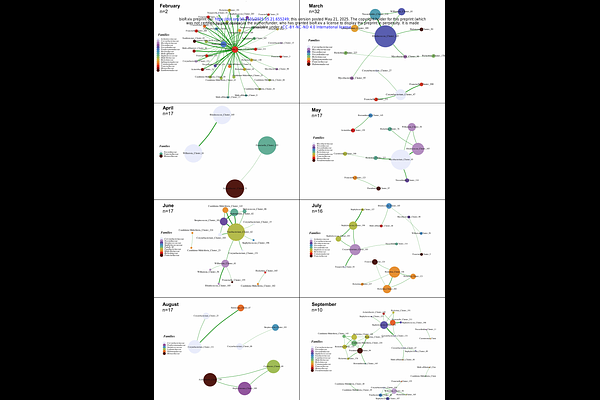Contrasting temporal patterns and associations in Hyalomma marginatum microbial communities: key insights for the development of novel tick and tick-borne diseases control tools

Contrasting temporal patterns and associations in Hyalomma marginatum microbial communities: key insights for the development of novel tick and tick-borne diseases control tools
JOLY-KUKLA, C.; Manzanilla, V.; Duhayon, M.; Bru, D.; Jeanneau, M.; Moutailler, S.; Pollet, T.
AbstractBackground: Hyalomma marginatum is an invasive tick species in southern mainland France that can carry several pathogens of human and animal interest. Because the tick microbiota represents a major factor that can potentially modulate the pathogen acquisition and transmission and might become a new control tool against ticks and tick-borne diseases, it is more than essential to identify the composition of the H. marginatum microbiota, its temporal dynamics and interactions (statistical association) between members of the tick microbiota. Methods: From monthly tick samplings performed in the same site between February to September 2022, 281 adult ticks H. marginatum were collected from horses. The microbiota composition was characterised using a high throughput sequencing approach. Different statistical analyses allowed us to assess the influence of several factors (month, season, tick sex) on the H. marginatum microbial communities and reveal potential interactions among members of these communities. Results: Apart of known obligate endosymbionts Francisella and Midichloria, and the hypothesised facultative endosymbiont (Rickettsia) that dominated the microbiota of H. marginatum, we detected Staphylococcus, Corynebacterium, Williamsia and Mycobacterium, usually described as commensal and/or environmental bacteria. The microbiota composition and bacterial networks differed between males and females, with males being more diverse and composed of more environmental bacteria. We reported several temporal shifts for both males and females into the microbiota composition and bacterial networks. The temporal shifts observed for females were more chaotic in terms of movements among nodes, compared to the male microbial communities that exhibited a more organised and stable dynamics. Conclusions: The influence of tick sex and time on the holobiont H. marginatum underlines the importance of the scale at which the study is conducted.